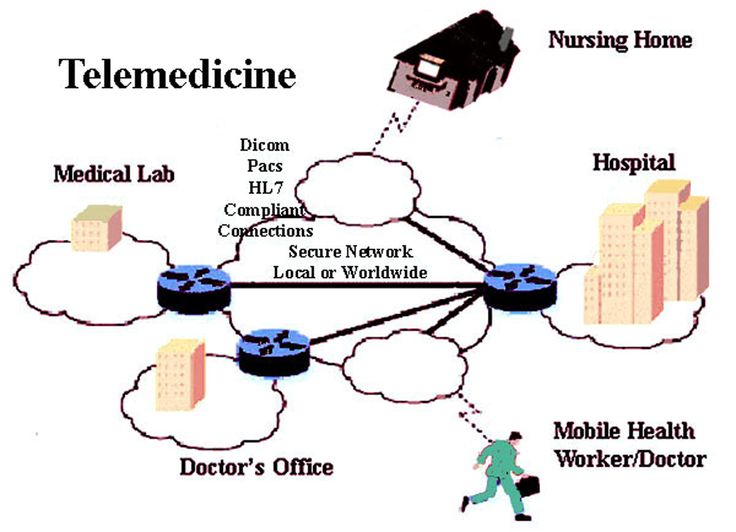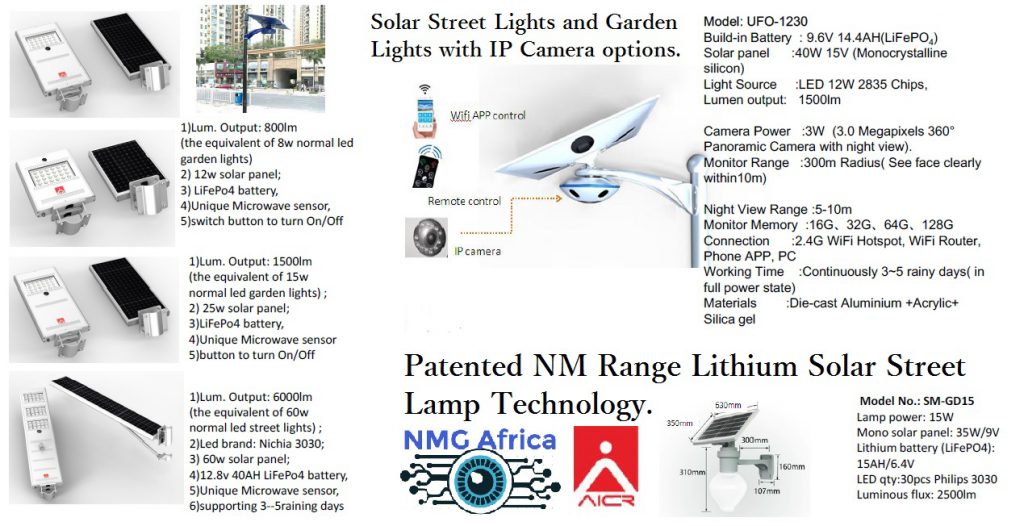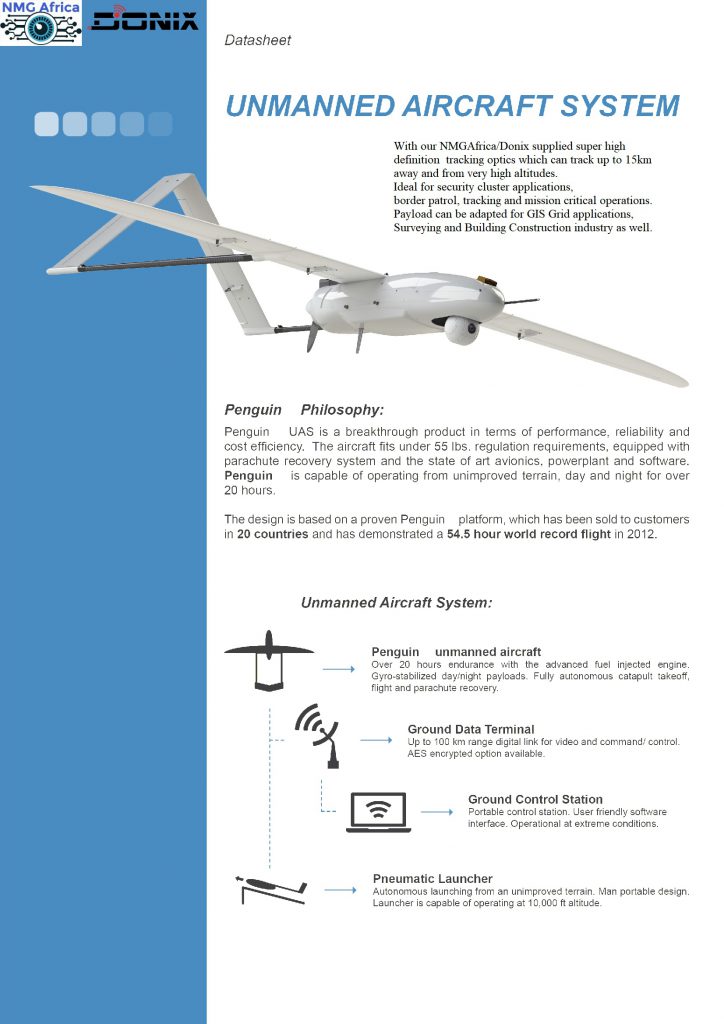
Telemedicine in Smart Cities





Principal Engineer, Dr M Khan, MAESP, MAIENG
Introduction:
Civil engineering projects and the construction of buildings and plants contribute a fair percentage of Southern African GNP. International trends to hold contractors or owners responsible for structural guarantees over prolonged periods of time, so called Design Build and Operate contracts, are changing the nature in which structures will be built in the next century.
Artificial Intelligence (AI) techniques in structural / construction engineering have already found potential applications. AI has the potential to help design engineers develop vital structural design infrastructure.
Less obvious is the need for development of acceptable sensor technology for applications in structural health monitoring, or even truly Intelligent Structures (IS) that can adapt to changing conditions, such as seismic activity. The evolution of sensor systems suitable for civil engineering projects or plant construction, as well as control mechanisms capable of great flexibility or adaptation, is discussed in this paper. The paper is intended to be a brief technology overview and is by nature a tutorial.
The Intelligent System concept
The age of the Intelligent or Smart Structure is the natural successor to modern man’s progression from the Stone Age through to the present Synthetic Materials Age [1]. The nineteen nineties has seen the intelligent or smart structure development emerge as a truly multidisciplinary field. A Smart structure is defined [ 2 ] as “a nonbiological structure that has definite designed in purpose and will, and some means to achieve that purpose.” It is in the achievement of these objectives that electronics and information technology will find an increasing role to play in the development of adequate sensor, control and actuation mechanisms.
AI in civil engineering
The need for structural infrastructure to assist in design becomes vital if one considers the many uncertainties and variable conditions that design engineers have to deal with. Artificial intelligence techniques involving “expert systems” can play an important role in the design phase of large civil structures. [ 3 ] Design case studies and databases can for instance be extremely valuable since structural life cycles are often measured in centuries or decades. Design engineers could therefore apply components and concepts from one design to another quite easily. The fact that some knowledge is standardised as codes of accepted practice lends itself quite naturally to incorporation in AI databases. AI software for civil engineering is still in its embryonic phase and should be exploited more fully. A knowledge based framework that can assist in the often difficult task of finite-element structural modelling have been proposed. [ 4 ]
The continuous development of automated or semi-automated techniques for knowledge acquisition would allow engineers greater flexibility in experimenting with AI Learning tools.
Photonic sensors for civil engineering
Photonic sensors for civil engineering structures is yet another exiting and logical application of this new and far superior class of sensor technology. Introducing sensors into a large structure was not previously viable due to:
What is photonic sensor technology all about?
These sensors operate by measuring parametric changes in light between a light source and a detector due to external physical factors. Modern photonic sensors generally require only a fibre optic cable interconnection and can be embedded in a structure. With the revolutionary changes that took place in the last decade in fibre-optic cable technology, as well as research into viable point and distributed photonic sensors, these techniques are set to dominate instrumentation in the next century.

Figure 1: Photonic sensors using only fibre-optic cable embedded in a structure
Sensors for bridges and buildings
Adding sensors to a bridge or building is not a simple task. Monitoring systems often have to be designed in at the conception of a project in order to meet specific requirements. Photonic sensors meet the structural requirements for civil engineering in being able to:
These factors make photonic sensors ideal for civil engineering applications. The essential sensing requirements for civil structures can be summarised as: [5]
Construction loads, both during and after construction may also be important to measure and may increase site safety as well as providing valuable data for improved construction techniques. Latent responses such as the response of bridges to heavy truck loads, peak hour traffic, wind and earthquakes, are vital to measure and could alert owners to possible remedial action. The cost saving in maintaining a structure that has the capability of damage assessment and health monitoring is self evident.
Control of intelligent civil structures
The smart materials age is changing the way in which structures are viewed today. A structure that in general can sense, and not only sound an alarm but also adopt a temporary or permanent course of action to restore things back to “normal”, is the class of structure that one can classify as “intelligent.” Intelligent civil structures require robustness, both in terms of the sensor technology as well as the proposed control system. Control theory applied to a civil structure is again relatively new, and is of course implicitly linked to adequate sensor technology.
The theory of control
Control theory have found a wide spectrum of applications which are of major technological importance. A control system generally have the components outlined below:

Figure 2: Closed loop control system
Disturbances acting on the structure causes conditions that are sensed by the photonic sensors. The sensor response is fed back to the controller, programmed or designed with a control law that determines what actuator response is needed to keep the disturbances from degrading the structure. In classical control theory, the stability of a negative feedback closed loop system, outlined in figure 2, is well established.
In order to design a control system, a reasonably accurate model of the structure and its dynamics must be attained. Generally, feedback design of large systems without model approximations is unrealistic. It is usually unnecessary because the input/output behaviour of large systems can usually be approximated with lower order models. The model order here refer to the order of the differential equations governing the dynamic behaviour of a structure.
Implementing a classical control methodology to structure would typically follow the steps outlined in figure 3.

Figure 3: Steps in the design of a control system
Neural networks for control
Obviously the need to achieve fast, accurate and stable control is the aim of all control systems design. The term neural network (more properly : artificial neural network) have a specific meaning in that it refers to any architecture that has a massively parallel interconnection of basic processors. A neural network or processor is generally made up of “neurones” , which forms the basic computational element of the processing system. Neural nets (NN’s) are not, properly speaking, just an extension of artificial intelligence (AI). A neural network can be trained and on the basis of this training make generalisations and decisions. This is not the realm or objective of AI systems.
A general neural network is illustrated below in figure 4.

Figure 4: A three input neural network
From the above illustration, one can see that NN’s are ideally suited for complex non-linear systems with multiple inputs and various degrees of uncertainty in the approximate model of the system to be controlled.
The main advantages of neural networks in the control of intelligent civil structures are:
Neural networks already found applications in simple manufacturing processes such as regulation in the manufacture of rebars for reinforced concrete construction.[6 ] In another application , damage assessment, employing photonic sensors and neural network processors have also been demonstrated. [7] Thus far, neural network generalisation techniques have found more applications in modelling, design and estimation procedures for civil engineering [8][9], than in prospective control applications.
Summary:
The development of effective AI techniques can enhance the development of complex structures that are intended to be classified as “intelligent.” In order to generally develop a large intelligent structure, the need for an appropriate sensor technology, such as that provided by photonic sensors, would be ideally suited for this type of application. Applying control theory to a structure is essential if degradation is not only intended to be monitored but acted upon by the structure itself. Finding a systems model for controller development could however be demanding.
Present applications of neural networks to the control processes of systems are dependent on a fair amount of heuristics. The advantages of using NN’s in the control of complex systems are however not to be treated lightly. Together with photonic sensors, it is the next step in the evolution of an acceptable and optimal control architecture for complex systems such as a structure.
References:
[1] Kekana M and Sun B, “A Technical review of Smart Materials and Structures. Part 1: An Introduction,” Submitted to Journal of SA Mechanical Engineers, June 1997.
[2] Spillman WB, “Smart Structures,” Optical Engineering, Vol 36, No 7, July 1997.
[3] Garret JH, Smith FC, “AI Applications in Structural/Construction Engineering,” IEEE Expert, August 1996, pp 20-22
[4] Turkiyyah GM, Fenves SJ, “Knowledge-Based Assistance for Finite- Element Modelling,” IEEE Expert, June 1996, pp23 -32
[5] Culshaw B, Michie C, Gardiner and McGown, “Smart Structures and Applications in Civil Engineering,” Proceedings of the IEEE, Vol 84, No.1 January 1996, pp78 -86
[6] Dunston PS, Ranjithan S, “Neural network Model for the Automated Control of Springback in Rebars,” IEEE Expert, August 1996, pp45-49.
[7] Grossman B, Gao X and Thursby M, “Composite damage assessment employing a neural network processor and an embedded fibre-optic sensor array,” SPIE Vol.1588, 1991, pp64-69
[8] Teh CI et al, “Prediction of Pile Capacity using Neural Networks,” Journal of Computing in Civil Engineering, April 1997, pp129 -132.
[9 ] Mukerjee A and Despande JM, “modelling initial design process using Artificial Neural Networks,” Journal of Computing in Civil Engineering, Vol 9, No 3, July 1995.
by Principal Engineer , Dr M Khan, MAESP, MAIENG
Due to electrical energy supplies being diversified, mainly due to the introduction of renewable energy technology used to generate electricity; adequate energy distribution systems need to be established to transmit electricity (Sun et al., 2015).
Due to the increasing electrical energy demand, a greater need for improved infrastructure is needed to transmit energy to consumers, however, due to environmental and land-use regulations, adequate transmission of electrical energy is not possible; resulting in bottlenecks (Asare et al., 1994).
A solution to these issues was the Flexible AC Transmission System (FACTS), which was discussed in this report. The history and current status of transmission systems were addressed to highlight issues faced with current transmission systems and the need for an improved transmission system.
The impact of renewable energy technology on energy generation was discussed; which lead to the need for an alteration in conventional energy distribution systems. The possibility of integrating the flex-grid distribution system in South Africa was also discussed in this paper.. History of and Current Status of Transmission Systems History of and Current Status of Transmission Systems
In the 19th century, DC electrical energy was supplied via short transmission lines. As the demand for electrical energy grew and the distance between power stations and consumers grew, AC was used to transmit current over longer distances with less loss of power. Voltages ranging from 400 kilovolts to 1000 kilovolts (pending in China) are frequently used in the 21st century (Kirschner et al., 2005).
With an increase in the global efforts to reduce the carbon footprint of the world, the use of renewable energy technology has grown. Because conventional energy distribution infrastructure is inadequately equipped to deal with the integration of renewable energy technology, flex-grid configurations were developed. With an increase in electrical energy demand, worldwide, energy producers had to develop a means to transmit electricity effectively (Rogers & Overbye, 2009).
There is only a certain amount of electrical energy able to be transferred through the grid, via transmission lines. The factors, which limit the amount electrical energy distributed through transmission lines, include (Paserba, n.d.):
Currently, due to the increasing population and the increasing life expectancy, a greater toll is taken by infrastructure and resources, resulting in a greater impact on the environment (Retzmann, 2007).
Due to the infrequent nature of renewable energy, a constant energy load would not be able to be produced by renewable energy sources, due to external forces (e.g. fluctuating weather patterns). An embedded system, supplying energy to a grid, would therefore be complex to control due to numerous variables. Flexible AC Transmission systems (FACTS) would therefore be a viable option for efficient energy transmission.
FACTS distribution methods aim to develop a configuration which would be able to vary distribution of electrical energy using real-time data. With real-time data technology, the distribution system would be able to adequately deal with varying load demands and varying load resource availability, with respect to renewable energy technology (Rogers & Overbye, 2009).
Flexible AC transmission systems would resolve issues around the distribution of greater amounts of electrical energy, without the need of more transmission lines, which saves costs and benefits the environment (certain areas are restricted from the construction of transmission lines). These systems would be able to integrate and distribute the load generated from renewable energy technologies (Okeke & Zaher, 2013). Flex-grid transmission holds more benefits, such as (Sun et al., 2015):
There are, however, disadvantages to the flex-grid system, such as the high capital costs. Because the configuration makes use of renewable energy technology, the use storage devices would become a key component in the configuration (Sun et al., 2015). Because of varying loads, consumers use different amounts of energy at different times of the day and the use of renewable energy sources, such as solar PV systems, which generate electrical energy during the day when sunlight is abundant; energy needs to be stored and used when energy demands are great (IEA, 2011).
Due to the enhancement of thyristor component technologies, HVDC and FACTS systems are able to transmit power over distances of 1 000 km to 2 000 km with overhead transmission lines (Retzmann, 2007).
According to (Retzmann, 2007), energy transmission over distances up to 700 km are feasible using AC transmission, however, HVDC transmission becomes more economically feasible for distances greater than 700 km with power greater than 1 GW. Current DC transmission systems in use deliver 600-800 MW over distances greater than 300 km; with projects where power is transmitted over distances over 1 000 km. Due to these advancements in HVDC systems, it is deemed a reliable system for transmission.
According to (Beck et al., 2006), development of hybrid transmission systems for large systems would be feasible. These hybrid systems consist of HVDC and FACTS subsystems hold various advantages such as lower maintenance costs, increased reliability and stability in the transmission system. With hybrid transmission systems HVDC would be used to serve larger power systems over long distances, while systems with shorter distances and less power demand are served by AC power. The benefit of the hybrid system allows the HVDC links to strengthen AC connections to avoid system instability. A schematic of a HVDC – FACTS hybrid system can be seen in Figure 1
Due to a blackout in the United States of America, which occurred in 2003, Siemens and Neptune developed an HVDC transmission link, between Sayreville, New Jersey and Long Island, New York, with a transmission distance of 105 km, and a power rating between 600 MW and 660 MW. The installation supplied 700 000 households with electricity during a 2007 blackout in New York, with power being supplied from New Jersey (Retzmann, 2007).
Germany implemented an HVDC and FACTS system for an application which transmitted electrical energy of the magnitude of 600 MW from Germany to Sweden (Retzmann, 2007).
The IRP 2010-2030, aims to meet South Africa’s energy demand by spreading the load across various energy generation systems, such as coal fired power stations, nuclear power stations, renewable energy and gas fired power stations (Department of Energy, 2011). The IRP aims to decrease the dependency of coal use, by delegating larger portions of South Africa’s load to cleaner sources of energy and diversify energy production.
Because of the diversification of energy production systems, adequate distribution methods need to be in place. The flex-grid configuration may be a viable option for South Africa as there is a considerable influence of renewable energy technology in South Africa’s aim to expand the energy market.
Costs would be greatly negated in terms of storage mechanisms. Because of South Africa’s landscape, pumped storage devices which are efficient and have a low localised cost of energy when compared to other storage devices (Eskom, 2010).
Because South Africa transmits power to neighbouring countries, such as Zimbabwe, Namibia and Mozambique, to name a few, which range in distances in excess of 1 000 km; FACTS may be a financially feasible system of energy transportation (Beck et al., 2006).
With a worldwide attempt to harness energy from various sources for the production of electrical energy, namely renewable energy technology, nuclear power and reducing the reliance on fossil fuels; electrical energy distribution methods need to be improved to deliver electricity efficiently.
The flex-grid distribution configuration holds many advantages such as power bottleneck reduction (Kirschner et al., 2005), integration of various energy sources, decrease in power failures and improves response times to emergencies (Sun et al., 2015).
Flex-grid distribution may be viable for South Africa as one of the aims of the Integrated Resource Plan (IRP) 2010-2030, was to diversify energy sources. A flex-grid distribution configuration would be able to integrate these intermittent sources of electricity.
Asare, P., Diez, T., Galli, A., O’Neill-Carillo, E., Libraries, P. & Robertson, J. 1994. An Overview of Flexible AC Transmission Systems. Computer Engineering. http://docs.lib.purdue.edu/cgi/viewcontent.cgi?article=1208&context=ecetr\nhttp://docs.lib.purdue.edu/ecetr/205/.
Beck, G., Breuer, W., Povh, D. & Retzmann, D. 2006. Use of FACTS and HVDC for Power System Interconnection and Grid Enhancement. Power GEN Middle East 2006: 1–33.
Department of Energy. 2011. Integrated Resource Plan for Electricity 2010-2030. , (March): 78. http://www.energy.gov.za/IRP/irp files/IRP2010_2030_Final_Report_20110325.pdf.
Eskom. 2010. COP 17 fact sheet. Pumped Storage Scheme: Drakensberg and Palmiet: 1–4.
International Energy Agency IEA. 2011. Solar Energy Perspectives. http://www.iea.org/publications/freepublications/publication/Solar_Energy_Perspectives2011.pdf\nhttp://www.oecd-ilibrary.org/energy/solar-energy-perspectives_9789264124585-en.
Kirschner, L., Retzmann, D. & Thumm, G. 2005. Benefits of FACTS for power system enhancement. Proceedings of the IEEE Power Engineering Society Transmission and Distribution Conference, 2005: 1–7.
Okeke, T.U. & Zaher, R.G. 2013. Flexible AC Transmission Systems (FACTS). Conference and Exhibition – 2013 International Conference on New Concepts in Smart Cities: Fostering Public and Private Alliances, SmartMILE 2013: 1–4.
Paserba, J.J. How FACTS Controllers Benefit AC Transmission Systems. : 949–956.
Retzmann, D. 2007. Benefits of HVDC & FACTS for sustainability and security of power supply. Powerafrica Conference and Exposition,: 1–22. http://www.ptd.siemens.de/Power_Africa_Paper.pdf.
Rogers, K.M. & Overbye, T.J. 2009. Power flow control with Distributed Flexible AC Transmission System (D-FACTS) devices. 41st North American Power Symposium, NAPS 2009: 1–8.
Sun, H., Wang, Y., Nikovski, D. & Zhang, J. 2015. Flex-Grid: A dynamic and adaptive configurable power distribution system. 2015 IEEE Eindhoven PowerTech, PowerTech 2015.